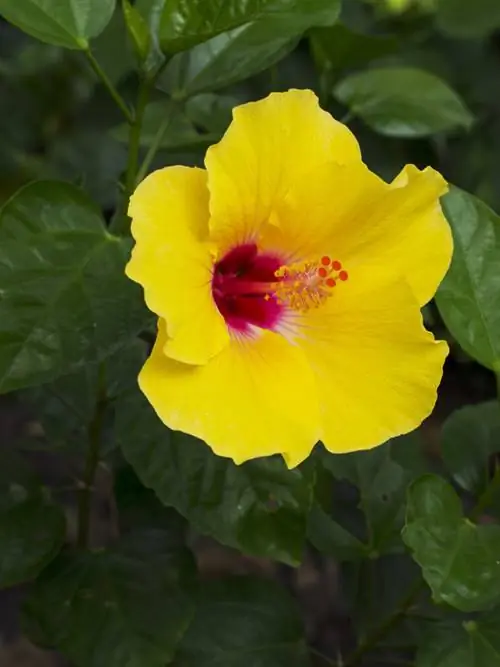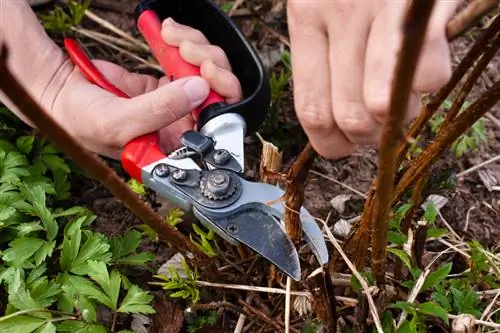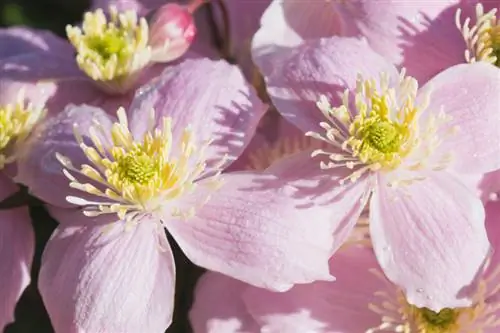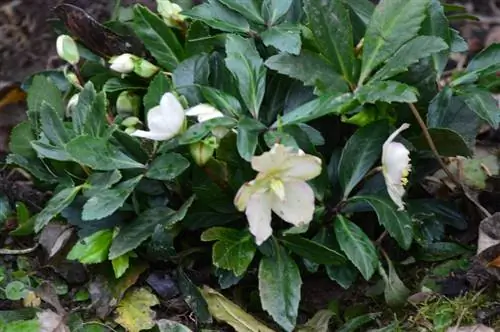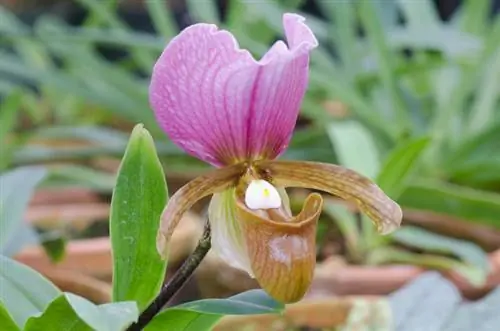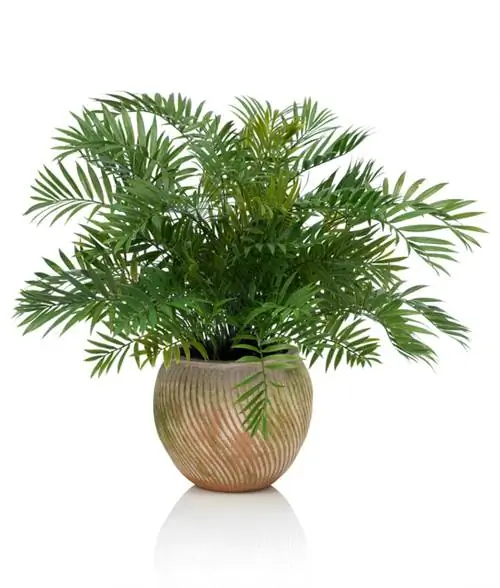- Author admin [email protected].
- Public 2024-01-10 23:11.
- Last modified 2025-01-23 11:19.
The hibiscus has settled in well in a sunny, sheltered spot in the garden. Although it doesn't demand much, you should follow a few care instructions and then you can enjoy the most wonderful flowers from your favorite place.
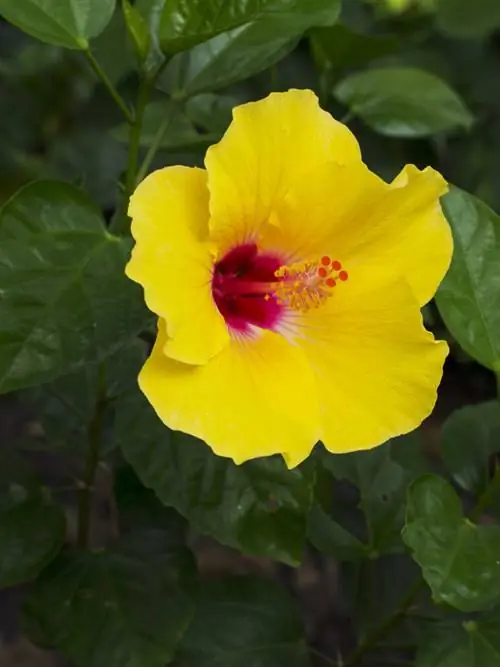
How do I best care for my hibiscus?
For optimal care of your hibiscus, you should water regularly, keep the soil moist, avoid waterlogging, use organic fertilizer or compost, cut back in spring and pay attention to pests such as aphids.
How often do I need to water my hibiscus?
Young plants in particular need a lot of water to grow, so they should be watered regularly. When drought persists, the hibiscus, also known as the marshmallow or rose marshmallow, tends to drop its leaves. That's why you should always keep the soil around the hibiscus moist, but at the same time avoid waterlogging.
Does the hibiscus need a special fertilizer?
Organic fertilizer or compost, which is applied to the soil in spring, is suitable for fertilizing.
How can I move the hibiscus?
The best time to transplant hibiscus is spring, around the end of March. You should proceed in the following steps:
- Preparing a new planting hole about 50 cm deep with loosened soil
- if necessary cut out or cut back the bush
- dig up carefully and generously so as not to damage any roots
- Water the planting hole
- Insert the bush, cover it with soil and slurry it in at the same time
- Tamp down the soil, water it and cover it with compost or bark mulch
- water regularly
Do I have to trim my hibiscus?
Yes, you should trim the hibiscus once a year to maintain the abundance of flowers, train the growth habit and avoid senescence and excessive growth. If you notice that the flowers are getting smaller and smaller, it is also time to cut them back.
When is the right time to prune the hibiscus?
The garden hibiscus is cut in spring. It's best to wait until the end of March. Then the severest night frosts should be over and fresh shoots won't freeze again straight away.
How and with what do I cut the hibiscus?
To cut the hibiscus, use well-sharpened garden or pruning shears (€14.00 on Amazon). You make the cut diagonally above an eye or directly on the trunk. The hibiscus thanks a pruning with vigorous new growth and can be shortened by around a third without any problems.
If you have planted a flowering hibiscus hedge, cut the hedge down to about two thirds every year.
My hibiscus is infested with aphids, how can I get rid of them?
Hibiscus flowers are also very popular with aphids. As a preventive measure, you can plant the hibiscus with herbs such as lavender, sage or thyme, whose smell is unappetizing to aphids.
If you have discovered the unwanted guests, you have the choice between collecting them or showering them with a powerful jet of water. Then spray the entire bush with soapy water until it is dripping wet. You can get ready-made, organic soap mixtures at hardware stores or garden centers. There are also chemical agents for use against particularly stubborn aphids.
My hibiscus has yellow leaves, what now?
Yellow leaves usually indicate a nutrient deficiency. With this so-called chlorosis, your hibiscus needs more fertilizer.
If, on the other hand, individual yellow spots have formed on the leaves, the hibiscus is affected by yellow spot disease. This is a virus infection. The best way to contain it is to remove all affected leaves. Other plants in the garden could also be affected, so you should examine them too.
What do the brown spots on the leaves of my hibiscus mean?
Brown spots on the leaves can be caused by leaf spot fungus. Simply collect the affected leaves and dispose of them.
Why are my hibiscus flowers falling off without being opened?
This happens when the hibiscus lacks water. So be sure to water in dry periods.
How can I overwinter the garden hibiscus safely?
You have probably planted the tried and tested hardy variety Hibiscus syriacus in the garden. You can protect young plants in winter by covering the soil with a layer of bark mulch. Older plants do not require any special protection.
My terrace is decorated with a hibiscus in a pot. What do I have to consider when caring for him?
Hibiscus rosa sinensis is often used as a container plant for the terrace, as it absolutely needs a sunny location. However, once the flowering period begins, it must not go crazy, otherwise it will drop the flowers.
It requires a lot of water, but you should definitely make sure that the bucket or pot does not become waterlogged and pour off any excess water. Holes in the pot, which you can usually drill yourself, or a drainage layer made of stones are helpful.
The potted plant must be brought into the house before the first frost. Here it overwinters best at temperatures between 10 and 15°C.
Tips & Tricks
You can make the soapy water to combat aphids from 1 tablespoon of soap per liter of water. A nettle infusion may also help. The mixture of chopped nettles and water must steep for three days and is then drained.

